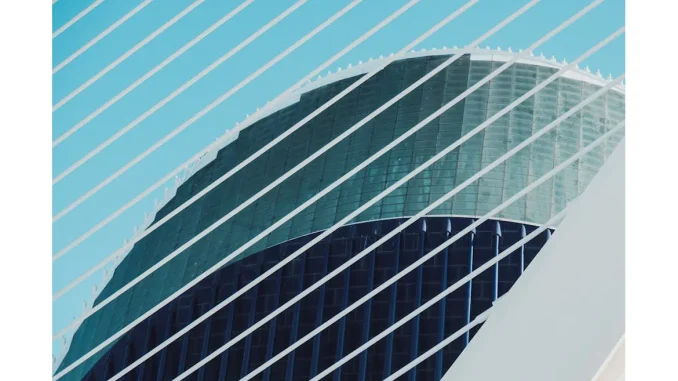
In an era increasingly defined by sustainability and environmental awareness, the concept of green building has emerged as a cornerstone for a more eco-friendly future. This revolutionary approach goes beyond mere energy efficiency, integrating natural, human, and economic systems to enhance the quality of life for all stakeholders. Green building is a holistic movement, considering the triple bottom line—environmental, social, and economic factors—to create value for everyone involved, from developers to occupants, and from policymakers to the broader community.
The journey towards sustainable construction is marked by the integration of Building Information Modeling (BIM) and Life Cycle Assessment (LCA) techniques. These innovations have fundamentally transformed how structures are designed, constructed, and operated, offering a new dimension to sustainable development. By incorporating BIM-LCA, architects and builders are equipped to make informed decisions about materials, energy use, and environmental impacts throughout a building’s lifecycle. This synergy between technology and sustainability ensures that each phase of a building’s existence, from conception to demolition, adheres to principles that minimise waste, optimise resource efficiency, and reduce environmental footprints.
Certifications such as LEED, Energy Star, BREEAM, Green Globes, Living Building Challenge, GreenGuard, WELL Building Standard, NABERS, Green Star, CASBEE, and VERDE play pivotal roles in this green building revolution. These certifications set high standards for sustainable practices, ensuring that buildings not only meet specific environmental benchmarks but also contribute positively to the health and well-being of their occupants. For instance, BREEAM evaluates buildings across key areas such as in-use, building, and new construction & renovation. By assessing a building’s specification, design, construction, and use against established benchmarks, BREEAM ensures that sustainable practices are embedded throughout the building’s lifecycle, thereby promoting a culture of sustainability within the built environment.
Similarly, LEED stands as the world’s most widely used green building rating system, offering a comprehensive framework for designing, constructing, and operating healthy, highly efficient, and cost-saving green buildings. LEED certification provides environmental, social, and governance benefits and is applicable to all building types and phases. This framework emphasizes sustainability at every stage of a project, from initial concept to operation and maintenance, ensuring that buildings contribute to environmental stewardship and occupant well-being.
The green building process is dynamic, encompassing several phases: planning, design, construction, operations, and end-of-life considerations. Each phase is meticulously planned to reduce waste, resource consumption, and promote long-term sustainability and resilience against environmental challenges. Sustainable building design integrates natural systems and energy efficiency, prioritising occupant health and well-being. By using sustainable materials and methods during construction and managing operations efficiently, green building practices aim to achieve a balanced harmony between environmental, social, and economic benefits.
A significant focus of green building is creating healthy indoor environments. This involves utilising non-toxic materials, ensuring adequate ventilation, and incorporating natural light to improve indoor air quality and occupant comfort. These measures not only enhance the well-being of occupants but also contribute to increased productivity and reduced absenteeism in workplaces. In addition, green building practices promote social cohesion and community engagement by designing buildings that harmonise with their surroundings. This includes creating green spaces, pedestrian-friendly areas, and incorporating public amenities that enhance the quality of life for residents and visitors alike.
Energy efficiency remains a cornerstone of green building. By integrating renewable energy sources such as solar panels, wind turbines, and geothermal systems, green buildings reduce reliance on fossil fuels and decrease greenhouse gas emissions. Energy-efficient designs incorporate advanced insulation, energy-efficient windows, and smart building systems that optimise energy use and reduce waste. The integration of BIM and LCA techniques has further propelled the green building movement, providing a digital representation of a building’s physical and functional characteristics and enabling architects and builders to visualise and simulate various design options.
For example, during the design phase, BIM-LCA can help identify the most sustainable materials and construction methods, minimising environmental impacts and optimising resource efficiency. During construction, these techniques can be used to monitor and manage waste, ensuring that materials are used efficiently and waste is minimised. In the operational phase, BIM-LCA can help optimise energy use and maintenance practices, ensuring that the building operates efficiently and sustainably throughout its life. As buildings near the end of their life, BIM-LCA techniques can guide decisions on recycling or reusing materials, further reducing environmental impacts and contributing to a circular economy. This comprehensive approach ensures that sustainability is considered at every stage of a building’s lifecycle, promoting long-term resilience and adaptability in the face of environmental challenges.
With its focus on environmental, social, and economic sustainability, green building serves as a blueprint for a more sustainable future. Prioritising healthy indoor environments, community well-being, and energy efficiency, green buildings pave the way for a more environmentally conscious and socially responsible built environment. Certifications offered by programs like BREEAM and LEED play a crucial role in identifying and promoting sustainable building practices, setting the standard for excellence in green construction.
As we continue to embrace the principles of green building and integrate BIM-LCA techniques, the future of our built environment looks increasingly sustainable and resilient. Green building is not merely a trend but a transformative movement that promises a sustainable, healthy, and prosperous future for generations to come. By fostering a culture of sustainability and innovation, we can build a world where our built environment harmonises with nature, enhancing the quality of life for all.


Be the first to comment